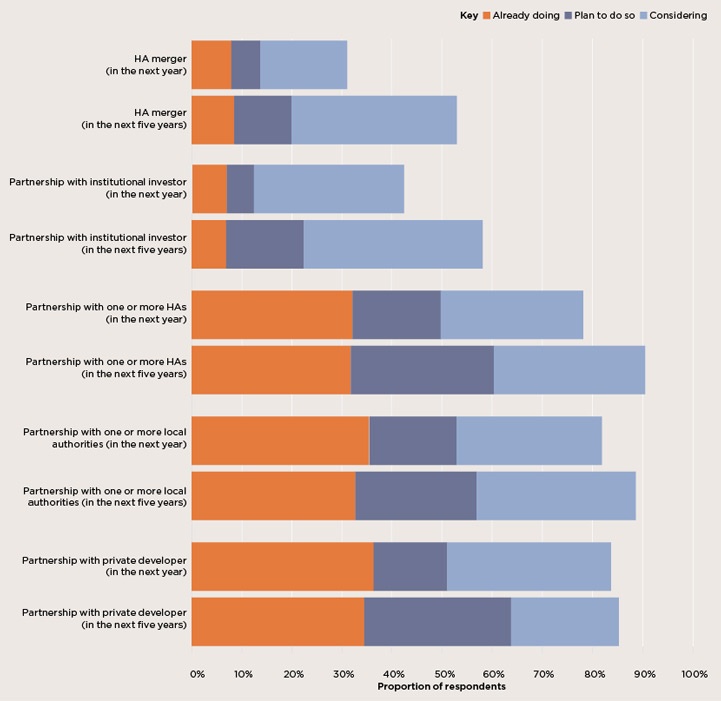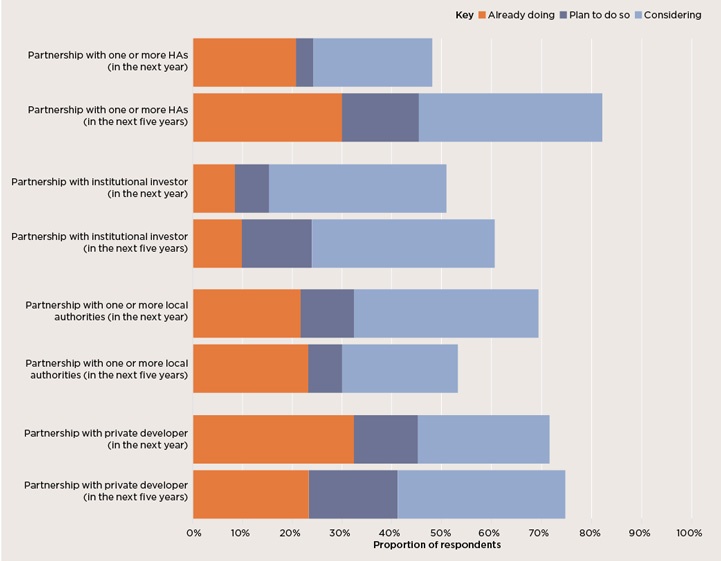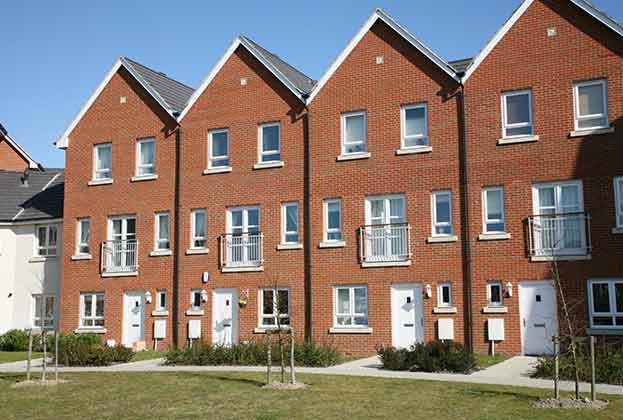As challenges in the sector evolve, local authorities and housing associations are increasingly looking at partnerships as a way to share resources, capacity and skills
A commitment to provide homes for those who need them in volatile political, economic and social times is a clear message from the survey and focus groups. However, alongside a common purpose, there are, inevitably, common challenges. Meeting those challenges requires a much greater need for partnerships; for which there appears to be a strong appetite.

The drivers
As we explain earlier in this report, housing associations are increasingly looking to move away from Section 106-led delivery. To do so, they need to secure land supply at viable prices. Competition for land will intensify, particularly as the lifting of the HRA borrowing cap gives local authorities scope to become more active in land markets.
Land-led development also requires skill sets which are not widespread in the sector. Organisations compete for the same workforce and expertise. This has been an issue for housing associations for some time; local authorities will add to this pressure.
The availability of grant has improved, but remains low in a historical context and associations are faced with the challenge that a slowing housing market presents to cross-subsidised affordable delivery.
So, problems come, in part, from within the sector. Encouragingly, the survey responses and focus groups suggest that solutions do, too.
The opportunity
We asked respondents about their likelihood to engage in partnerships during the next year and in the following five years. For both housing associations and local authorities, partnerships with each other are being actively considered.
This was also a standout theme in the focus groups, with attendees describing an appetite for partnerships. The potential for local authorities and housing associations to work more closely, not only with each other but also with their peers at a local or sub-regional level, comes through strongly.
So, what are the benefits of a partnership? For local authorities, it lies in providing access to resources, capacity and skills, and opening up shorter-term development opportunities at scale.
For housing associations, partnerships enable the delivery of opportunities at scale while avoiding unnecessary competition. This can include influencing local or subregional planning policy and infrastructure investment, and engaging effectively with local authorities and local government.
The role of the private sector
Partnerships are already widespread within the sector and our analysis suggests that about £1 billion was invested in joint ventures last year. This is likely an understatement, as accounting covers up off balance sheet activity to a degree. Partnerships with the private sector have already had an important role and the survey and focus groups suggest they will continue to do so. When they work well, they spread risk and accelerate delivery. In the focus groups, the importance of long-term partnerships, focusing on repeat business, a strategic approach and equal sharing of risk and reward, is a strong message.
Strategic partners have secured around £1.7 billion grant funding to deliver some 40,000 additional affordable homes
Savills Research
The role of government
Beyond this, the government recognises the need to respond to the sector’s request for a more flexible grant system. Homes England has been active in forming partnerships. Over the past 12 months, strategic partnerships have been agreed with 23 housing associations. Collectively, the strategic partners have secured around £1.7 billion grant funding to deliver some 40,000 additional affordable homes beyond pre-existing delivery plans. This responds to a long-term ask of housing associations for a more flexible grant system. The key features of strategic partnership funding are: certainty; flexibility; and the ability to draw down grant against eligible cash spend.
The message is clear. Partnerships are, and will continue to be, hugely important in the sector and can open up opportunities, accelerate delivery and reduce risk.
HOUSING ASSOCIATIONS
Partnerships with either other housing associations, local authorities or private developers are being undertaken, planned or considered in the next year by at least 70% of housing associations. Over the next five years this rises to at least 80%. Full mergers are less popular, but those considering rises significantly between the one and five-year time frames.

Housing association partnerships The appetite to form different partnerships in the short and medium term
Source: Capacity survey
LOCAL AUTHORITIES
In the short term, for local authorities there is most appetite for partnerships with other local authorities (almost 70%) and private developers (over 70%). In the longer term, appetite for partnerships with housing associations dramatically increases by more than 30% and appetite for partnerships with other local authorities falls by almost 20%.

Local authority partnerships The appetite to form different partnerships in the short and medium term
Source: Capacity survey
Read the articles within The Savills Housing Sector Survey below.
.jpg)



